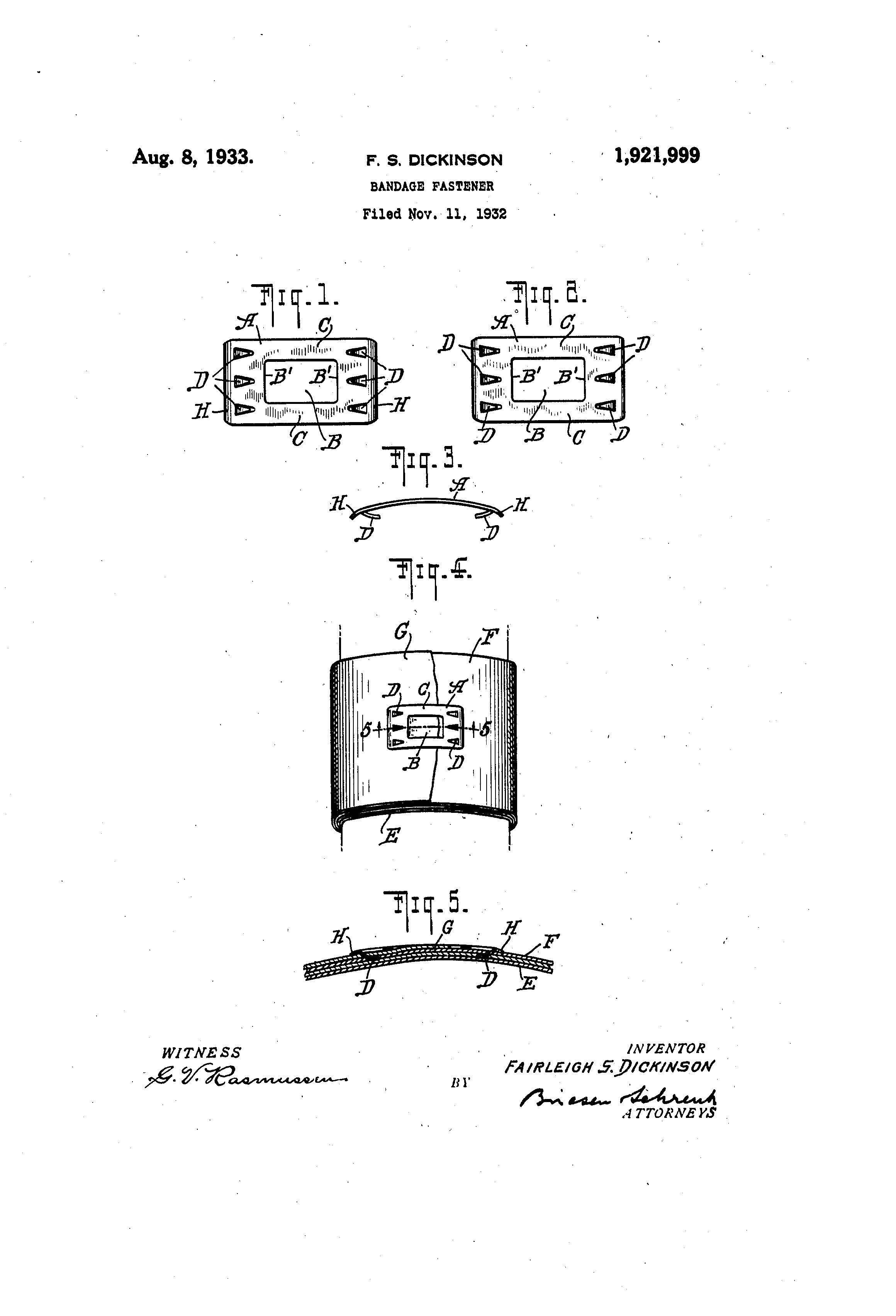
Like many bookbinders and conservators, I’ve used Ace bandages for many years. They are almost essential when rebacking leather bindings (apologies to Bill Minter) since nothing else has the gentle stretch and breathability. I never really wondered about the name, assuming the word “Ace” meant something like excellent, marvelous, or first-rate.
So I was interested to learn, upon purchasing an older Ace bandage in the original box, that it is an acronym for “All Cotton Elastic”.
According to the blurb on the original box,”This Ace Bandage obtains elasticity from the unique weave and its properly twisted warp of long-fibered Egyptian… Washing restores elasticity.” The familiar looking brass clips were patented by Fairleigh Dickinson in 1933, though there are only two teeth on each end, not three as drawn in the patent. The patent expired in 1950; most Ace bandages I’ve seen use something similar.

A bandage I have from the 1990’s is a looser weave, and doesn’t conform as well to irregular surfaces. One from the 2010’s made by 3M has “latex free” printed on it, is less breathable, possibly containing synthetic fibers. This is a good reminder that something that we generically call an Ace bandage may have significantly different working properties.
The older bandage stretches less when tensioned than either of my newer ones, so it can apply more compression in use. Yet another item to keep an eye out for while conducting primary research at flea markets and antique malls; aka. shopping.
